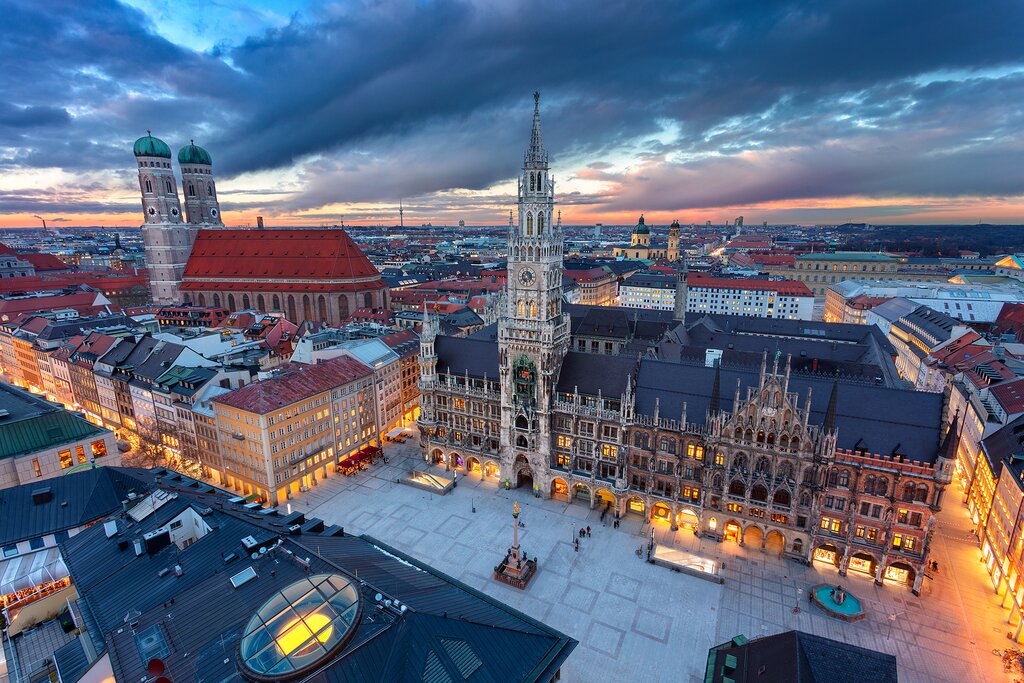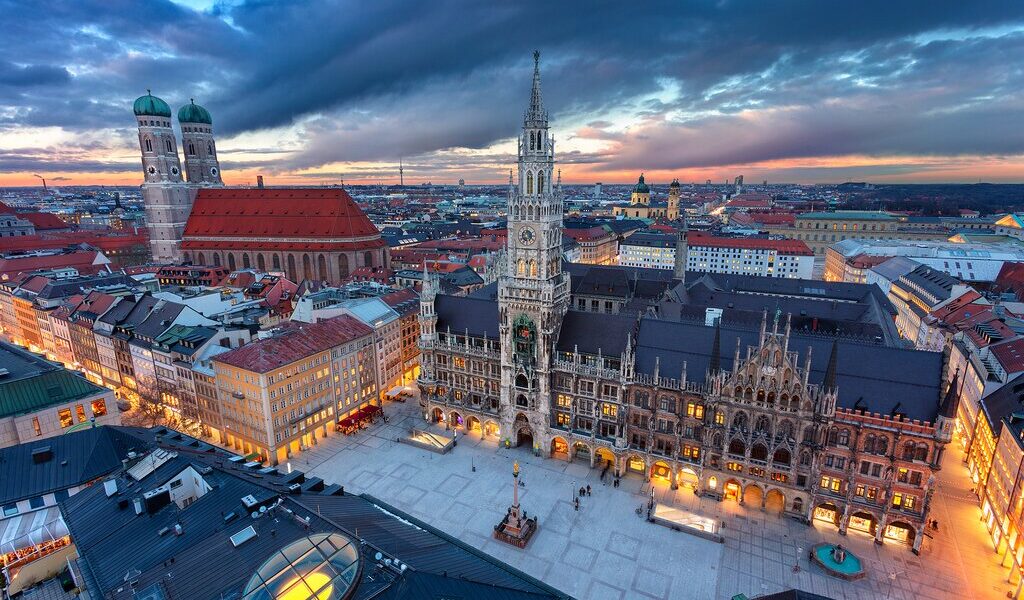
January is a quiet month to visit Germany’s famous cities and cultural sites, with appealing prices and few crowds. It’s also a great time to trade in the Glühwein for calorie-burning activities in the Bavarian Alps. Or, kick back at one of the thermal baths sprinkled around the country, from the medieval city of Cologne to a spa town near the border of France.
Weather in Germany in January
Let’s be frank: if you’re heading to Germany in January, you’re stepping into the heart of winter. The days are noticeably shorter, and the temperatures are undeniably cold—in fact, it’s typically the coldest period of the year for the country. In Berlin, the nation’s vibrant capital city, you can expect average daily high temperatures to hover around 37°F (3°C), while the lows often dip just below freezing, settling at approximately 28°F (-2°C). However, it’s crucial to remember that Germany is a diverse country, and temperatures can vary depending on your location. The northern coastline, nestled near the invigorating seas, tends to experience milder conditions compared to other regions. On the other hand, the eastern and southern parts of Germany can become considerably colder, especially during January. Interestingly, the southwest region sometimes boasts surprisingly temperate microclimates, offering a brief respite from the harsh winter chill. These localized warmer pockets are a lovely surprise if you find yourself in that area!
Regardless of where your German adventure takes you, be prepared for the possibility of snow—ranging from a light dusting to a significant accumulation. Furthermore, you might encounter other forms of precipitation, such as rain, icy conditions, or sleet. Given these potential weather challenges, it’s essential to prioritize packing warm and protective clothing. A thick winter coat is an absolute must-have, along with gloves and a hat to shield you from the biting elements as you explore the cities and countryside. A waterproof jacket and an umbrella are also highly recommended for those inevitable wet days. For extensive walking tours of cities, you might even want to consider investing in thermal underwear to stay extra cozy. But don’t let the winter weather completely dampen your spirits! If you’re fortunate, your trip might include days with brilliant blue skies and radiant sunshine—these moments certainly do happen and add a special touch to the winter landscape.
Crowds and Costs Associated with January Travel
Don’t let the chilly temperatures scare you away from a January trip to Germany! Travelers who brave the winter weather are often rewarded with the lowest rates of the year. This is because the festive Christmas markets have concluded, and the large influx of summer tourists is still months away. Embracing the cold weather allows you to experience a more authentic side of Germany, gaining genuine insight into how the locals live during the off-season. To maximize your savings, it’s wise to book your flights, accommodations, and activities well in advance. This early booking strategy can help you secure the best deals and availability. It’s also important to note that some tourist sites and accommodations may have reduced hours or even be closed for the winter season, so do your research and plan accordingly. If you’re a fan of winter sports, you’ll be pleased to learn that ski resorts in Germany tend to be more affordable compared to those in Switzerland or France, presenting opportunities for budget-friendly skiing adventures.
In summary, January in Germany offers a unique travel experience with fewer crowds and lower prices, but requires appropriate preparation for the cold weather and potential closures.
Exploring Germany: Where to Go in January
As you plan your trip to Germany, you’ll likely find yourself starting or ending your journey in one of the country’s major city hubs. January is an excellent time to immerse yourself in the rich cultural attractions of these cities, as the local residents resume their normal routines after the holiday season. Cities such as Berlin, Munich, Hamburg, and Frankfurt each possess their own unique charm and attractions, boasting an abundance of history, art, and architecture that could easily fill several days of exploration. A fantastic starting point is flying into the modern Berlin-Brandenburg airport and exploring Germany’s most visited city while the tourist crowds are at their lowest point. This allows for a more intimate and immersive experience of the city’s landmarks and cultural offerings.
However, Germany’s appeal extends far beyond its urban centers. The countryside offers a wealth of attractions and experiences, and train travel is a convenient and safe way to navigate the country, especially considering the potential for snowy driving conditions. Munich, for example, serves as an ideal gateway to the breathtaking Bavarian Alps. After spending a few days exploring the city, you can easily hop on a train to the renowned ski resort of Garmisch-Partenkirchen, which famously hosted the Olympic Games in 1936. Alternatively, you can venture to the southern Bavarian ski resort of Oberstdorf, which connects several stunning mountain peaks near the Austrian border. For photography enthusiasts, a visit to the fairytale Neuschwanstein Castle is a must. The train route to the castle winds its way through picturesque snow-covered alpine villages, providing breathtaking views along the way.
Another enticing option is to spend a few days in Frankfurt before embarking on a train journey south to the charming spa town of Baden-Baden, where you can indulge in relaxing thermal baths. Alternatively, you can continue further south into the enchanting Black Forest, offering a wide range of outdoor activities. A central hub in this region is Freiburg, a vibrant university town known for its stunning medieval architecture. A convenient train trip from Frankfurt will also take you to the historic city of Cologne, which offers even more thermal baths, as well as a wealth of medieval history and impressive architecture dating back 2,000 years. So, consider which destination best suits your travel desires when visiting Germany in January.
Experiences and Activities: What to Do in Germany in January
Don’t forget to bundle up in your warmest clothing and set out to explore the numerous cities that Germany has to offer. In Hamburg, you can easily spend an entire day simply wandering along the intricate network of canals and bridges, capturing stunning photographs along the way. When you need a break from walking, consider taking a harbor boat tour, which operates year-round, and learn about the significance of Hamburg as the biggest port in Germany—a true hub for international trade. Many cities across Germany also set up outdoor ice skating rinks in January, offering a fun and festive activity for locals and tourists alike. For example, in Dresden, you can find an ice rink set up in the charming courtyard of the Palais Taschenberg. If you happen to be in Berlin, you’ll have the opportunity to visit the capital’s famous landmarks without the usual crowds, including iconic sites such as the remnants of the Berlin Wall, Checkpoint Charlie, the majestic Brandenberg Gate, the thought-provoking Jewish Museum of Berlin, and the renowned five museums located on Museum Island.
You’ll find an abundance of activities to enjoy in the mountains during the winter months. The ski season in the Alps typically runs from Christmas through March, with countless resorts offering a diverse range of options, including downhill skiing, cross-country skiing, sledding, snowshoeing, and even curling. In addition, you can partake in horse-drawn carriage rides and guided tours of castles, glaciers, and dramatic limestone gorges. Visitors can also enjoy breathtaking scenic views by taking cable car rides. A highly recommended option is the gondola ride to the viewing platform of Zugspitze mountain, which stands as the highest peak in all of Germany.
January Events Not To Be Missed
International Ski Jumping Tournament, Garmisch-Partenkirchen. If your travels happen to bring you to this charming Bavarian ski town on the first day of the new year, don’t miss the International Ski Jumping Tournament. This thrilling competition is one of Europe’s most significant winter sporting events, drawing spectators from all over the world.
Three Kings Day (or Epiphany), nationwide. Celebrated on January 6th, this public holiday marks the day when local residents traditionally take down their Christmas trees. As you wander through the towns and cities, be on the lookout for children dressed as kings, singing carols and collecting donations for charitable causes.
Karneval (or Fastnet or Fasching), nationwide. This festive pre-Lenten celebration begins early in certain regions of Germany, with vibrant pagan-themed events taking place in cities such as Cologne, Düsseldorf, and the Black Forest towards the end of January. It’s a unique cultural experience that offers a glimpse into Germany’s rich traditions.
B-917

